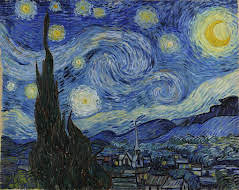The Transformative Power of the Arts
Art has been a fundamental aspect of human expression and creativity since the dawn of civilization. From ancient cave paintings to modern abstract sculptures, the arts have played a crucial role in shaping cultures, sparking dialogue, and challenging perceptions.
One of the most remarkable qualities of art is its ability to transcend language barriers and communicate on a universal level. Through visual imagery, music, dance, and literature, artists can evoke emotions, provoke thoughts, and inspire change. Art has the power to connect people from diverse backgrounds and foster empathy and understanding.
Moreover, the arts provide a platform for individuals to express their unique perspectives and experiences. Artists often use their work as a medium to address social issues, advocate for justice, or celebrate cultural heritage. Through their creations, they can shine a light on pressing issues and ignite conversations that lead to positive transformation.
Engaging with art can also have a profound impact on personal well-being. Whether creating or experiencing art, individuals can find solace, joy, and catharsis through creative expression. Art therapy has been widely recognized for its therapeutic benefits in promoting mental health and emotional healing.
As society continues to evolve, the arts remain an essential component of our collective identity and progress. Supporting artists and cultural institutions not only enriches our communities but also fosters innovation and creativity. By investing in the arts, we invest in our shared humanity and create a legacy that transcends generations.
Let us celebrate the transformative power of the arts and embrace their capacity to inspire change, foster connection, and enrich our lives.
Exploring the Arts: Top 10, Seven Types, Definitions, and Basic Forms
- What are the top 10 arts?
- What are the 7 different types of art?
- What is your definition of arts?
- What are the 7 basic arts?
What are the top 10 arts?
When it comes to the world of arts, the concept of ranking artworks into a definitive “top 10” can be quite subjective and challenging. Art is a diverse and multifaceted field encompassing various forms such as painting, sculpture, music, literature, dance, and more. The beauty of art lies in its subjective nature, where each individual may have their own personal favorites based on their unique preferences and experiences. Rather than focusing on a rigid hierarchy of top 10 arts, it is more enriching to explore and appreciate the vast array of artistic expressions that contribute to the rich tapestry of human creativity and culture.
What are the 7 different types of art?
There are seven main types of art that encompass a wide range of creative expressions and mediums. These include visual arts, such as painting, drawing, and sculpture, which focus on creating visually appealing works. Performing arts encompass disciplines like dance, theater, and music, where artists use their bodies or voices to convey artistic messages. Literary arts involve written or spoken forms of expression, including poetry, prose, and storytelling. Other types of art include architecture, which combines aesthetics and functionality in building design; film and media arts that utilize visual storytelling through motion pictures; decorative arts like ceramics and textiles that emphasize craftsmanship; and digital arts that explore creativity through technology and digital platforms. Each type of art offers unique avenues for artists to communicate ideas, emotions, and perspectives to audiences around the world.
What is your definition of arts?
Art is a multifaceted form of creative expression that encompasses a wide range of disciplines, including visual arts, performing arts, literature, and more. At its core, art is a reflection of human imagination, emotion, and experience translated into tangible or intangible forms. It serves as a means of communication, storytelling, and interpretation that transcends language barriers and resonates with individuals on a deeply personal level. Art has the power to provoke thought, evoke emotions, challenge perspectives, and inspire change. It is a dynamic and evolving field that continuously pushes boundaries and invites exploration of new ideas and concepts.
What are the 7 basic arts?
The concept of the “seven basic arts” traditionally refers to the classical classification of art forms, which includes architecture, sculpture, painting, music, dance, literature (poetry and prose), and film/theater. These categories represent the diverse range of creative expressions that have been valued throughout history for their ability to inspire, entertain, and provoke thought. While the definition of art continues to evolve with changing times and new mediums emerging, the notion of these foundational art forms serves as a testament to the enduring significance of artistic endeavors in human culture and society.



